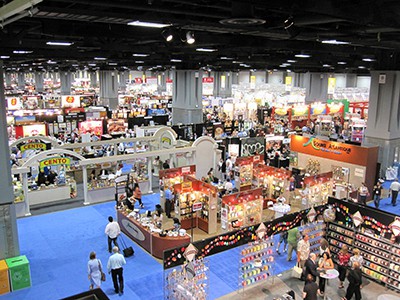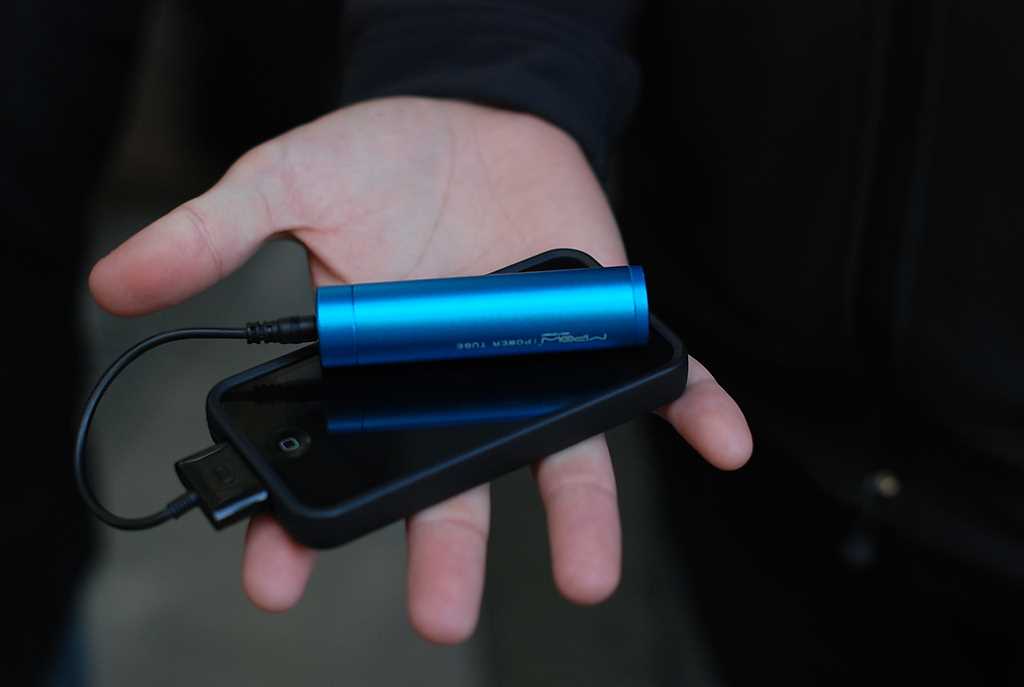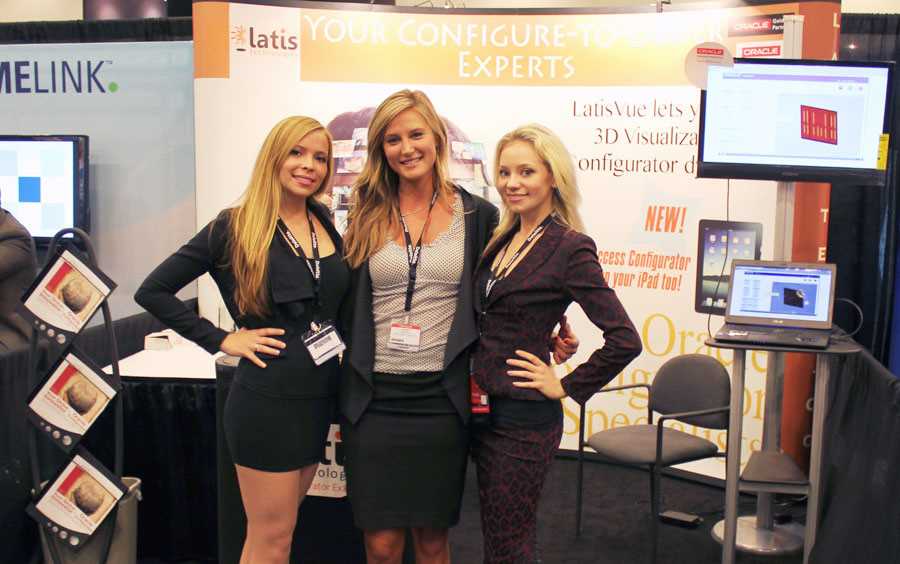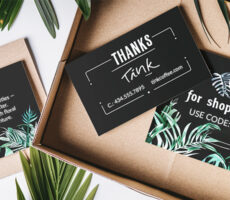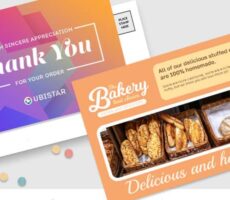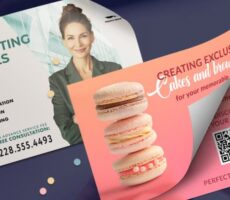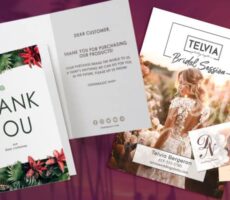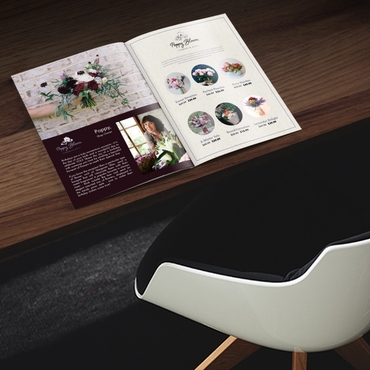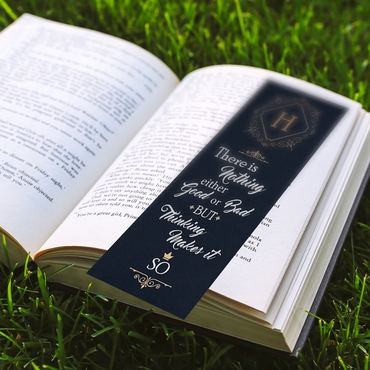CES, SEMA, NAB Show. Some of the biggest, baddest trade shows draw excitement just from their names alone. The massive crowds seem to grow even more each year. Why would attending a trade show still be so popular in today’s digital age? The answer lies in the marketing.
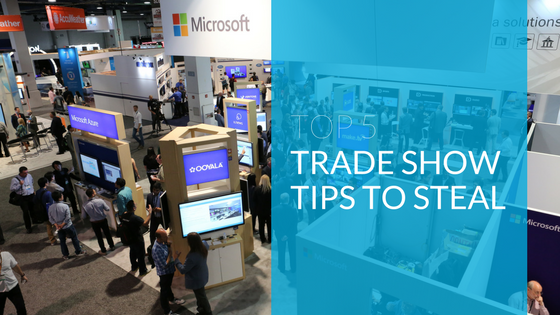
Trade shows are one of the most effective forms of face-to-face marketing for both B2C and B2B companies. Not to say that digital marketing doesn’t play a major part at trade shows and conventions, but there’s just something about being able to see, feel, hear and experience the latest tech toys or innovations in car manufacturing that can elicit child-like wonderment from grown men.
Mastering event marketing is essential to attracting prospects to your booth instead of a competitor’s. First, your target audience is standing right in front of you – they’ve already expressed interest in your exact industry. But not all attendees are created equal. More importantly, exhibitors will need to qualify individual booth visitors and generate good leads.
Once you identify a potential lead, how do you build a lasting relationship? Soft selling focuses on the customer, not the product. Most buyers want to feel they are making a good purchase, so they seek validation from as many places and people as possible. Why not hear it straight from the source?
The show floor is the perfect setting for interacting with those who have direct buying influence. Develop an elevator pitch to nail that sale. Keep it short (under 1 minute), sweet (share your most distinguishing stats and facts), and simple (drop any jargon that might go over the customer’s head). Mostly, you want to sell the benefits, not the features.
Trade shows present a rare opportunity to connect directly with the buyer and establish trust on a personal level. Attendees are already at the show with an express purpose – to weigh out buying options. Tip the scales in your favor with personal accounts or real testimonials from satisfied customers.
It’s well worth your while to add in-person events to your annual budget. Prepare for your next trade show or convention with a few key marketing materials and strategies to get the highest return on investment.
1. Stock up on business cards.
That tiny piece of paper still holds value when you’re mingling with key decision-makers and qualified leads, so be prepared to exchange contact information.
To really stand out, opt for 3-inch round cards or 2.5×2.5 square business cards that won’t get lost in the pile. The unique shape also speaks to your company culture as innovative and forward-thinking. Add a pop of color to the seams to match brand colors with sandwich business cards. Attendees will instantly recognize the ultra-thick and colorful business cards.
In case you run out of business cards during the show, have the design file handy. Many online printers save files and previous orders for easy reordering. Consider one that can accommodate print requests either same day or overnight so that your booth staff are never empty-handed.
2. Giveaways that make them stay.
The promotional bags and products industry rakes in $19.4 billion per year, and trade shows are among the biggest spenders. Swag should be relevant to the show or the attendee to make it home. Things that are unique, portable and exclusive stand a better chance of making your brand memorable.
First things first, make sure your giveaway can make it past airport security. U.S. flight regulations restrict travelers from boarding with liquid containers more than 3.4 ounces. Second, consider the location or time of year for items that can be immediately useful to attendees.
Seasonal swag, such as flip flops or sunglasses, would be a hot commodity at summer shows or beach destinations. If a show is scheduled during rainy season or where the weather is unpredictable, consider branded umbrellas for a thoughtful gift that can be reused.
Functional giveaways, such as mobile device chargers or power banks, are great for attendees and exhibitors whose smartphones typically run out of juice by lunchtime.
Kid-friendly items are a big hit with parents attending trade shows. Funny magnets for the home refrigerator are easy to take home and something the whole family can enjoy. On the flip side, wacky gifts might make for a good story that attendees will be telling over and over again, like a tissue box cover shaped like the Easter Island head statue.
3. Have knowledgeable and approachable booth staff.
After you’ve designed your booth, you need to staff it. Exhibitors can send their internal sales team to the show or hire and train local representatives. There are major benefits and disadvantages for both, but most importantly, invest time into booth staff training so that your company is well represented. This includes a sales script and practice scenarios for different visitor questions.
INTERNAL SALESPEOPLE
If relying on your existing sales team, keep in mind that trade shows and conventions are entirely different environments than selling over the phone or in the field. While sales representatives are intimately familiar with products or services, it’s wise to shift training from product knowledge to show floor etiquette.
Face-to-face interactions require sales staff to be quick on their feet and prepared to improvise. Although it is still a one-on-one conversation, your booth is surrounded by competitors. It’s a good idea to study up on other exhibitors and develop a sales pitch that talk up your unique benefits or solutions without putting down other brands.
Providing commission opportunities could be a fun competition among staff. Incentivize your sales team to convert as many leads as possible rather than robotically throw all visitors into a generic sales funnel.
The downside for sending staff members out to trade shows is that companies would have to cover lodging and travel expenses with no coverage at the office during that time.
HIRED BOOTH STAFF
Hiring temporary help at conventions can be a great alternative to having your money-making staff out of the office for an entire week. Local staffers significantly cut down overhead expenses for travel, lodging and other necessities.
Talent from agencies are skilled in acting as brand ambassadors and can work at any industry show. They are trained to interact and engage with guests to make them feel comfortable, eliminating the need to focus on social skills.
Exhibitors are also not limited in how much extra help to hire, ensuring the booth is never understaffed. Sending a handful of sales representatives supported by temporary staff helps keep the office running smoothly and the booth fully staffed.
One thing to consider is that stand-in staffers may not always be able to answer complex questions about the product or company. Have print reinforcements on hand, such as a folded brochure with detailed information or postcard directing attendees to the website for more information.
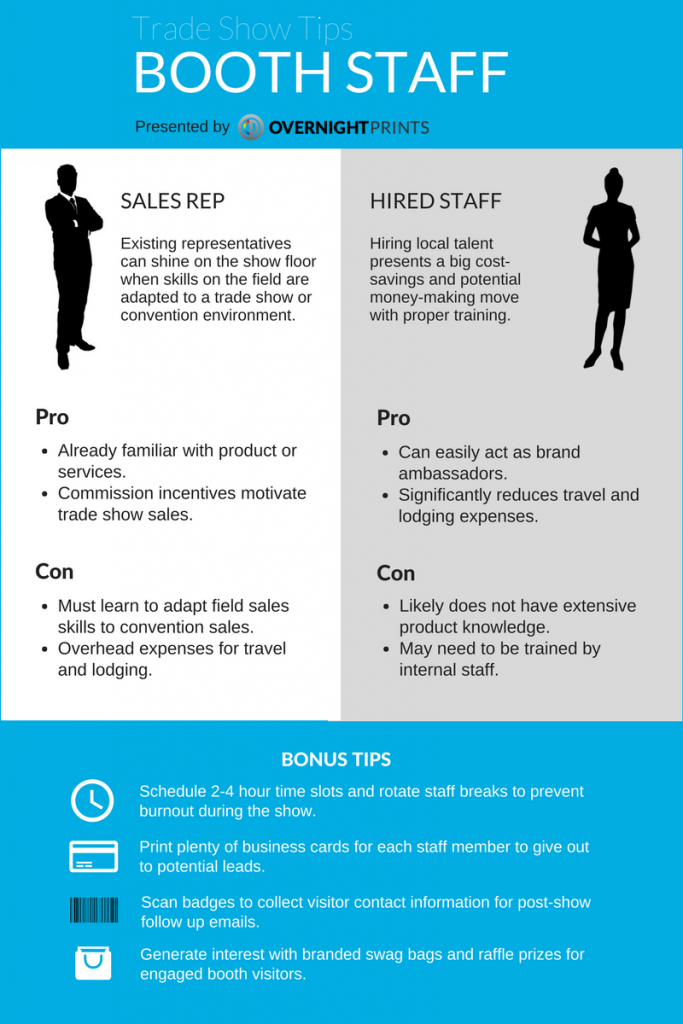
4. Play host.
A gracious host is presentable, prepared and professional. Prepare your team with booth staff training to demonstrate open body language.
Guests feel more welcomed when booth staff look approachable. Be sure staffers are standing to greet them. Having chairs or bar stools in the booth is not a terrible idea, but it could lead to slouching, which looks sloppy. Bar stools should be positioned so that staffers are at eye level with booth visitors.
While standing, booth staff should also leave hands at their sides instead of in their pockets or folded across the chest to appear open to conversation. This also prevents the constant use of cellphones to text or surf the internet during slow times.
To keep staff members from getting too tired during a show, arrange shorter 2-4 hour time slots and rotate schedules throughout the day so that they can take lunch breaks, rest and visit other booths.
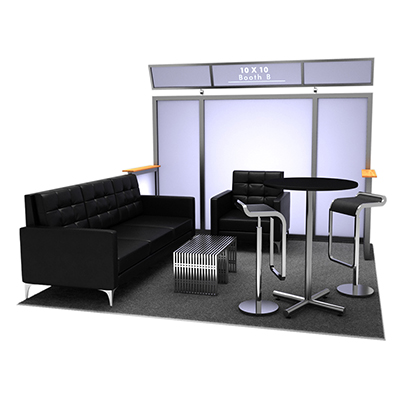
This should go without saying, but chewing gum is a huge faux pas. A breath mint is welcome, but chomping on gum while talking with booth visitors is equivalent to eating and drinking in front of a guest. Water bottles and small snacks should also be hidden from sight either behind the backdrop or under the table.
On the flip side, attendees appreciate comfortable seating within the booth. Help guests relax after a long day of walking the show floor. Depending on the show or industry, a small couch or tall tabletop with bar stools could work. This also allows exhibitors a few extra minutes to talk up prospects and convert them into leads.
Another welcome convenience is a device charging station or locker. Attendees, and their mobile devices, can take a load off and recharge. Not only will attendees be grateful, but they will also be more willing to listen to a short sales pitch in exchange for the courtesy.
5. Update booth graphics and creatives each year.
Many exhibitors have a presence at the same trade shows and conventions each year. This means attendees often recall last year’s booth graphics, even if you’ve moved to a different location. A refreshed marketing campaign can attract curious attendees by using different colors, creating a new tagline or rearranging the booth orientation.
Start from the inside out. Establishing your marketing strategy early can help steer the booth design itself. Will there be gamification this year? Will you focus on building a stronger social media presence? Consider popular trends in social media or digital marketing that have the chance to go viral. Think live streaming product announcements or creating custom photo filters.
Print collateral should also match the campaign’s overall look and feel. Maintaining a cohesive theme throughout print and digital marketing efforts will keep attendees engaged before, during and after the show. Make use of postcard mailers, booklets, brochures and other print materials to garner interest.
A few tips on trade show print collateral:
- Shop for quality. A high-quality printed piece speaks volumes about your brand.
- Have purposeful pieces. Each print should serve a different purpose or target different attendee types.
- Include a clear CTA (or call to action). Every printed piece should move attendees to take some action.
Attendees can and will judge your entire booth based on the print collateral. You’ve spent enough marketing dollars to exhibit in the first place; don’t neglect the only tangible thing that attendees associate with your brand. A flimsy postcard or poorly designed business card could lose you business before you’ve had a chance to pitch it.
- Business cards: Whichever shape or specialty finish you choose, start with ultra-thick 15pt business cards and build up from there. Spot UV highlights your logo or any other important element. For an elegant touch, go with soft touch laminate that feels as fancy as it looks.
- Postcards: A premium 15pt postcard works great for an attention-grabbing gloss finish or choose a thick 110# card stock for a modern matte. Send pre-show mailers to inform attendees of your booth number and any giveaways. Thank booth visitors for stopping by with post-show follow-ups that direct them to your website.
- Bookmarks: 2×6 custom bookmarks are compact and could easily serve as tickets for raffles and events.
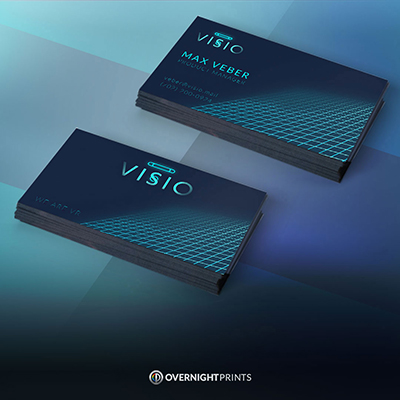
Before the show, attendees are scheduling meetings and booth visits to maximize their hours at the show. Give them a sneak peek of what to expect, especially if you’re running a contest or hosting an event, etc. Obtain the attendee list from the show organizer and send out 5×7 postcard mailers with your booth number. Including an exclusive code or special instructions for entering a competition creates intrigue and engagement before attendees even step foot into your booth.
During the show, pass out bookmarks as invitations or event tickets to conference sessions, cocktail networking or after-party events you’re sponsoring or hosting. For contests and other giveaways, business cards are the perfect size for prize entries. Handouts can be categorized for booth visitors versus qualified leads. Smaller postcards or rack cards can be made available to all those who stop by, but reserve detailed brochures and full booklets for qualified leads who show genuine interest or have direct buying influence.
After the show, be sure to follow up with booth visitors to show your appreciation and to begin building a long-lasting relationship. Establish that you’ve made a connection with a thank you postcard containing a link to your homepage or a show-specific landing page. Post-show follow-ups are crucial for continuing the conversation and converting prospects into leads.
Before you send collateral to the printer, include a clear call to action that engages attendees with your brand. That CTA could range from enter the raffle to visit the website for a free white paper. Incentivizing attendees adds value to your print collateral and trade show presence.
Visit OvernightPrints.com for your convention printing needs.

